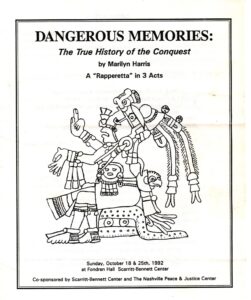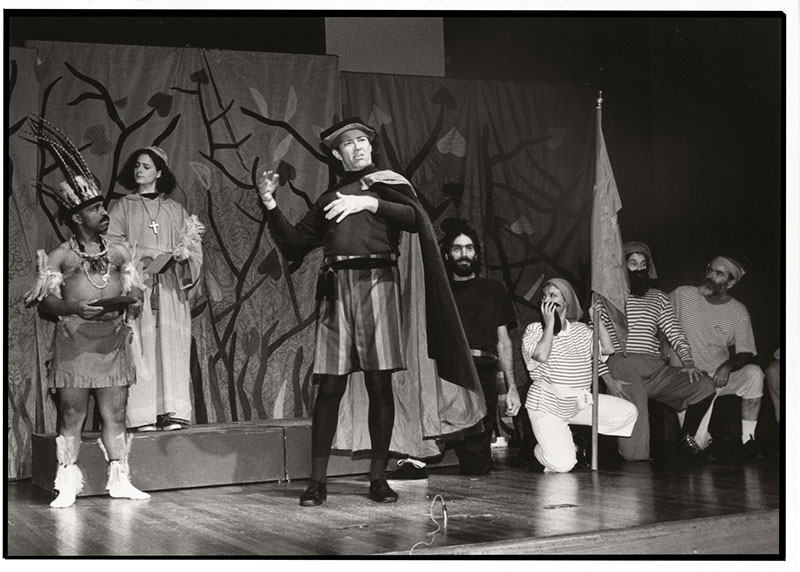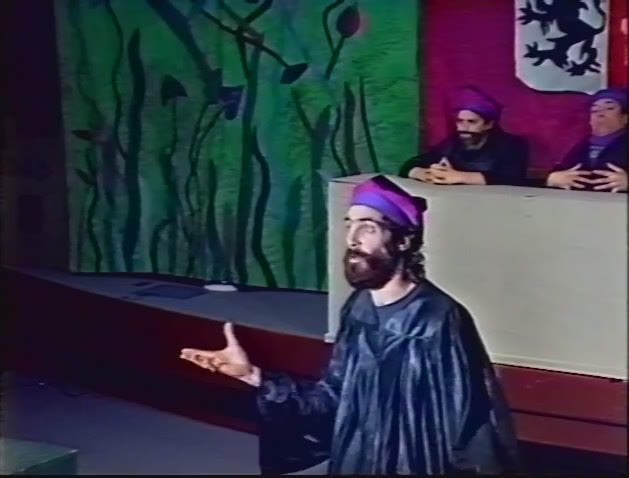
Marilyn explains why the play was written: the Columbus myth had to be exploded:
The Quincentennial year inspired some theatrical productions. As I sat writing my play in Tennessee, , The Underground Railway Theater in Massachusetts was doing the same. The year provided us with “a teachable moment” and we didn’t want it to slip by without calling attention to Columbus’ real legacy: 500 years of racism, oppression and stolen land.
Using the libraries of 3 universities — Vanderbilt, Tennessee State and Middle Tennessee State University — I researched and then wrote a three-act play in verse. I used familiar melodies and substituted lyrics that chronicled the Spanish expansion in The New World over a 30 year period. I made use of rap to tie the many scenes together. The rap beat announced the rappers, stage right, whose words anticipated the next scene. The play had 3 performances in Nashville, Tennessee.

The original title was “Dangerous Memories: The True History of The Conquest.” The Chicago Religious Task Force on Central America allowed me to use part of their title, “Dangerous Memories: Invasion and Resistance Since 1492.”
Howard Switzer, an activist, songwriter and architect friend, added two scenes to the play: the exchange of gifts between Columbus and the Taino Indians, and the finale song, “The Victors Write the History.” Howard played the roles of King Ferdinand, Frey Bartolome de Las Casas, the Vicar of Popayan and Hernan Cortes. Susan B. Solomon, Howard’s wife at the time, produced the play.
The cast were communards, past and present, from The Farm Community in Summertown, Tennessee, local Nashvillians enticed by Susan B. Solomon, and a half dozen Nashville high school students. No one had much acting experience.

Exceptions were Richard Stein, who went on to found The Olde Worlde Theatre Company in Nashville, and Grant Houston, who played the roles of Christopher Columbus, the corrupt Viceroy of New Spain, and Captain Hernando de San Miguel. We all collaborated to get the message out in the Quincentennial year. It’s a message that’s no less important today.
